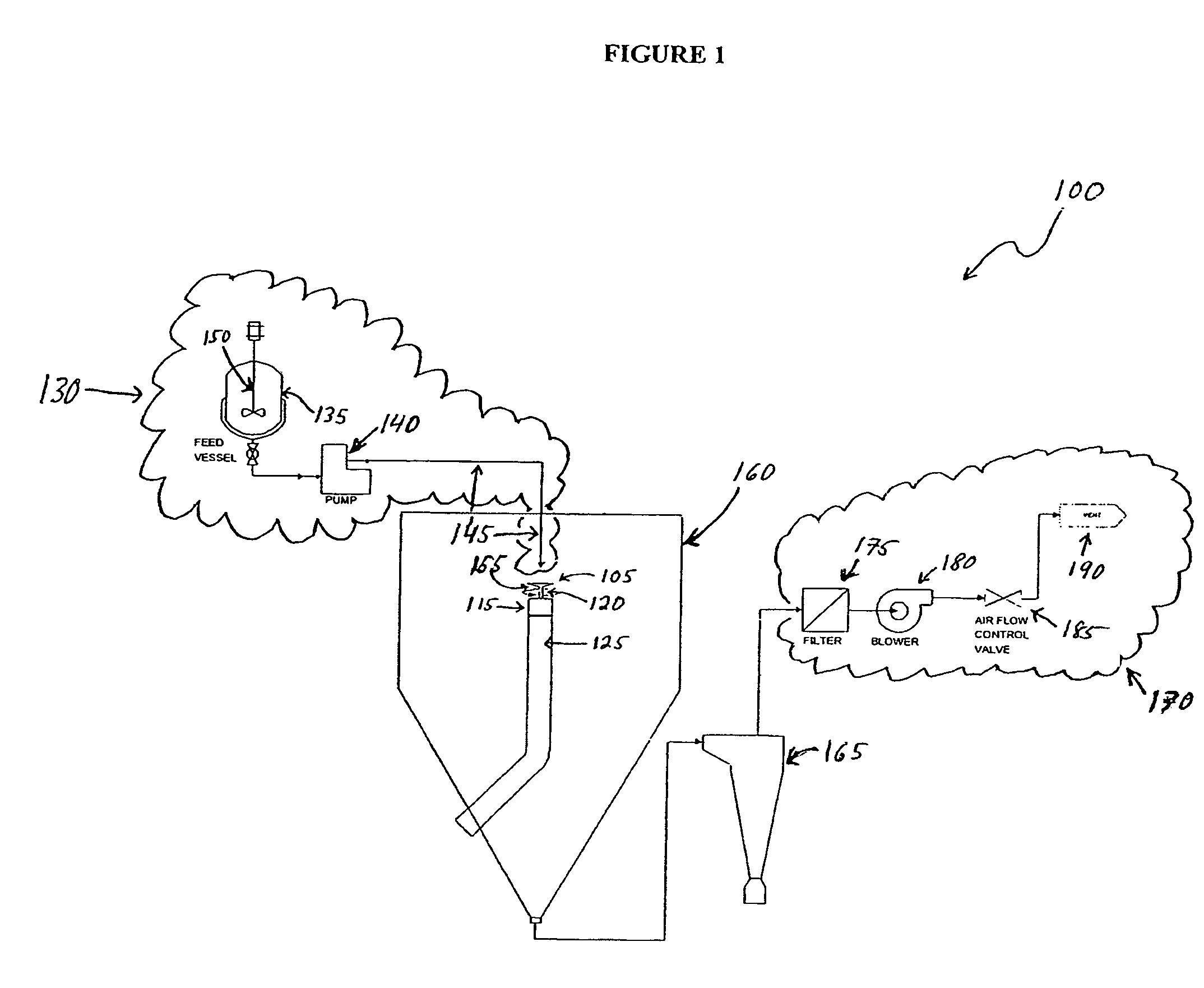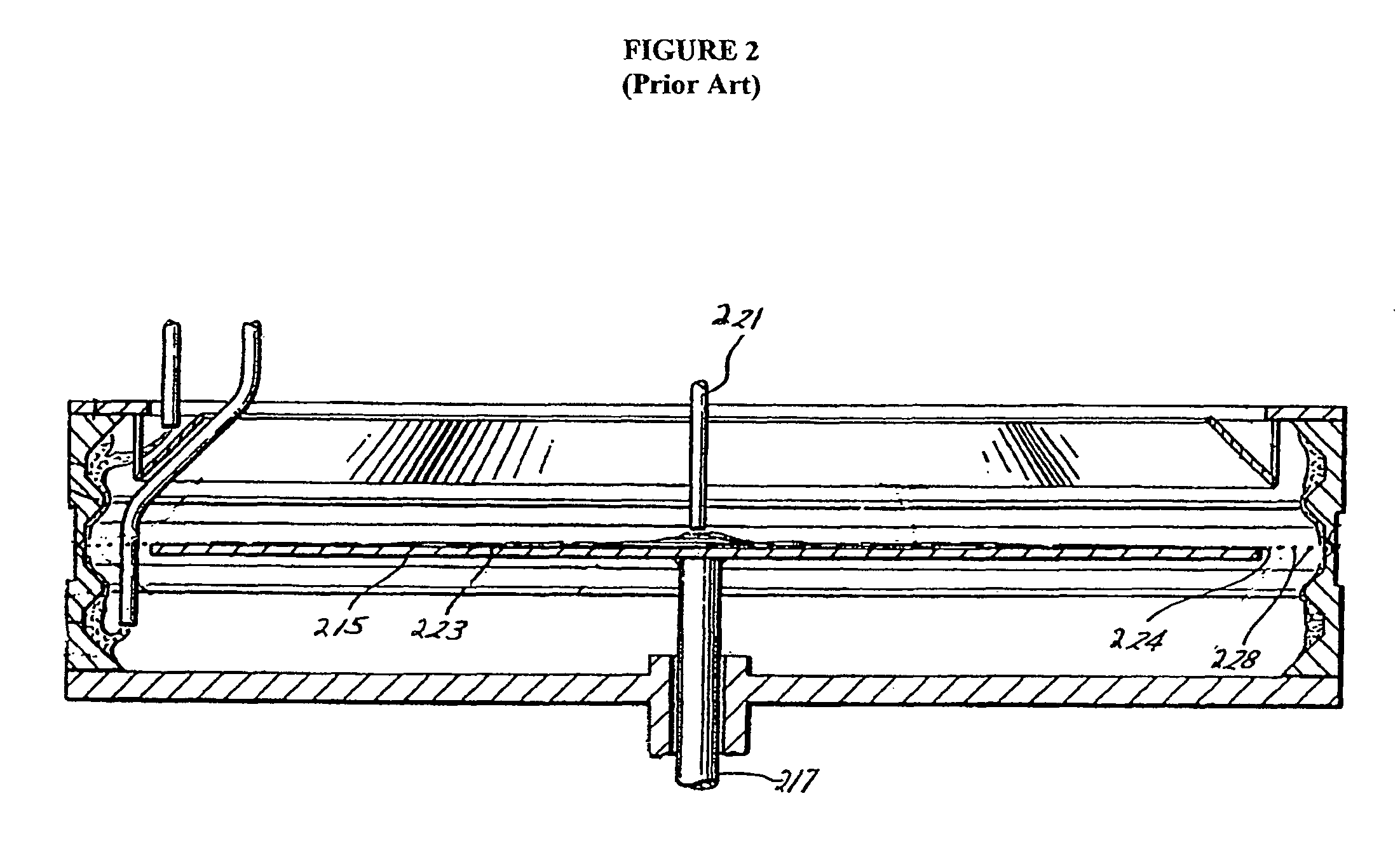Methods for preparing biodegradable microparticle formulations containing pharmaceutically active agents
a biodegradable and microparticle technology, applied in the direction of pharmaceutical product form change, manufacturing tools, prosthesis, etc., can solve the problems of errors in administration, unadjustable dosages, and inability to use and/or harm,
- Summary
- Abstract
- Description
- Claims
- Application Information
AI Technical Summary
Benefits of technology
Problems solved by technology
Method used
Image
Examples
example 1
[0068]In one embodiment of the microsphere manufacturing process described above, 312 g of an 8% poly lactide-co-glycolide (PLGA) 50:50 solution in 60:40 acetone / methylene chloride was prepared in feed vessel 135. To this solution was added 9.7 g of anecortave acetate, and the resulting dispersion was transferred at a rate of about 120 g / min. via fluid delivery system 145 into the reservoir 708 of a spinning disk 105 having a diameter of about 76.2 mm, rotating at a rate of about 3,000-4,000 rpm. Utilizing a process chamber 160 comprising an internal surface of high-density polyethylene (HDPE), microspheres were formed by evaporative removal of the solvent with an outlet temperature of the process chamber 160 of about 48-50° C. An 88% yield (30.6 g) of microspheres was collected as a free-flowing powder using a cyclone separator.
example 2
[0070]In an embodiment of the microsphere manufacturing process described herein, 200 g of 5% poly lactide-co-glycolide (PLGA) 90:10 solution in acetone was prepared in feed vessel 135. To this solution was added 6.7 g of anecortave acetate. The resulting dispersion was transferred at a rate of about 180 g / min. via fluid delivery system 145 into the reservoir 708 of a spinning disk 105 having a diameter of about 76.2 mm, rotating at a rate of about 4,000-5,000 rpm. Utilizing a process chamber160 comprising an internal surface of high-density polyethylene (HDPE), the microspheres were formed by evaporative removal of the acetone with an outlet temperature of the process chamber 160 of about 45° C. A 90% yield (15.0 g) of microspheres was collected as a free-flowing powder using a cyclone separator.
example 3
[0071]In an embodiment of the microsphere manufacturing process described herein, 200 g of 5% poly lactide-co-glycolide (PLGA) 90:10 solution in acetone was prepared in feed vessel 135. To this solution was added 0.5 g of polyethylene glycol (PEG 400) and 3.5 g of anecortave acetate. The resulting dispersion was transferred at a rate of about 200 g / min. via fluid delivery system 145 into the reservoir 708 of a spinning disk 105 having a diameter of about 76.2 mm, rotating at a rate of about 4,000-5,000 rpm. Utilizing a process chamber 160 comprising an internal surface of high-density polyethylene (HDPE), the microspheres were formed by evaporative removal of the acetone with an outlet temperature of the process chamber 160 of about 45° C. A 77% yield (10.8 g) of microspheres was collected as a free-flowing powder using a cyclone separator.
PUM
| Property | Measurement | Unit |
|---|---|---|
| diameter | aaaaa | aaaaa |
| diameter | aaaaa | aaaaa |
| angle | aaaaa | aaaaa |
Abstract
Description
Claims
Application Information
 Login to View More
Login to View More - R&D
- Intellectual Property
- Life Sciences
- Materials
- Tech Scout
- Unparalleled Data Quality
- Higher Quality Content
- 60% Fewer Hallucinations
Browse by: Latest US Patents, China's latest patents, Technical Efficacy Thesaurus, Application Domain, Technology Topic, Popular Technical Reports.
© 2025 PatSnap. All rights reserved.Legal|Privacy policy|Modern Slavery Act Transparency Statement|Sitemap|About US| Contact US: help@patsnap.com



